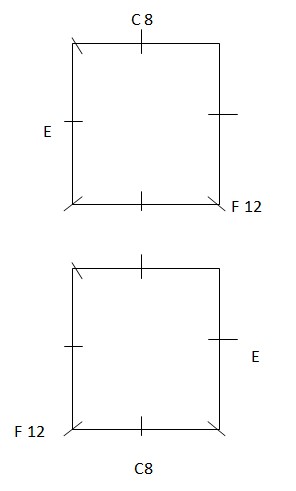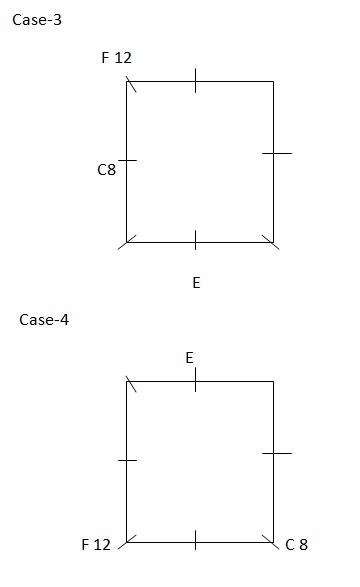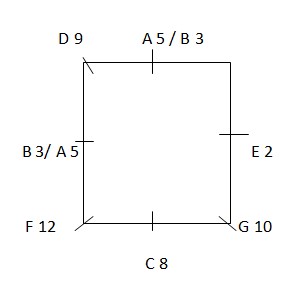Question
Who is sitting third to the left of
C? Answer the questions based on the information given below. There are 7 persons A, B, C, D, E, F and G sitting around square table, where four of them were sitting in the middle of the edges and three are sitting at the corners. Each of them is of different ages among- 2, 3, 5, 8, 9, 10 and 12. Each of them is facing towards the center of the table. E, who is sitting at the edge, is sitting second to the right of C, who is 8 years old. F, who is the oldest person, is sitting three places away from E and is sitting at the corner. G, who is 1 year elder than D, is sitting opposite to D. A is 2 years elder than B, and both of them are either sitting at the corner or at the edge. A and G are not immediate neighbors.Solution
E is sitting at the edge and 2nd to the right of C. C is 8 years old. F, who is the oldest person, is sitting three places away from E and is sitting at the corner. So, E is sitting at the edge which means we have four possible places for E. Case-1 
 G, who is 1 year elder than D, is sitting opposite to D. A is 2 years elder than B, and both of them are either sitting at the corner or at the edge. A and G are not immediate neighbors. Now, G is sitting opposite to D which is not possible in case I and III so, these cases are rejected. Also, in case IV, if we place G and D opposite then we can’t place A and B on the same side of the table so, case IV is also rejected. A must be 5 years old and B must be 3 years old also, D must be 9 years old which means G is 10 years old. Then final arrangement is shown below:
G, who is 1 year elder than D, is sitting opposite to D. A is 2 years elder than B, and both of them are either sitting at the corner or at the edge. A and G are not immediate neighbors. Now, G is sitting opposite to D which is not possible in case I and III so, these cases are rejected. Also, in case IV, if we place G and D opposite then we can’t place A and B on the same side of the table so, case IV is also rejected. A must be 5 years old and B must be 3 years old also, D must be 9 years old which means G is 10 years old. Then final arrangement is shown below: 
Which process involves the removal of sodium ions from the soil exchange complex?
What is the relationship between marginal cost (MC) and fixed cost (FC):
In plant breeding, DNA markers are useful in several ways. Which of the following does not fall under the importance of DNA marker...
Ozone depletion is caused by
Rajat Rekha is a mutant cultivar of _____
What is the primary mode of transmission for Downy Mildew in crucifers?
Which process involves the deposition of leached materials in lower soil horizons?
The botanical pesticide "Pyrethrum" is derived from
Thalamus of hypogynous ovary is
Given below are two statements:
Statement I: Single cross includes two parents to produce the F₁.
Statement II: Mango variety Sindhu is ...
Relevant for Exams:


